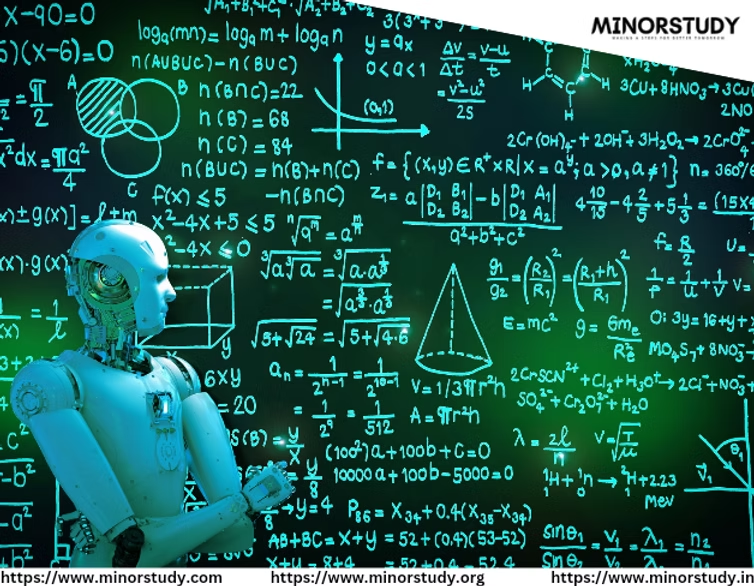Robotics: An Overview
Robotics is an interdisciplinary field that integrates engineering, computer science, and technology to design, build, and operate robots. Robots are automated machines that can perform tasks either autonomously or semi-autonomously. Robotics plays a crucial role in industries such as manufacturing, healthcare, agriculture, and even space exploration.
Key Features of Robotics
Aspect | Details |
Focus | Designing and programming robots to perform specific tasks. |
Core Disciplines | Mechanical engineering, electrical engineering, computer science, and artificial intelligence. |
Applications | Manufacturing, healthcare, defense, agriculture, space exploration, and entertainment. |
Key Areas | Automation, control systems, machine learning, and computer vision. |
Core Components of Robotics
Mechanical Systems: Physical components like joints, arms, wheels, and actuators.
Electronics: Sensors, motors, power supplies, and microcontrollers.
Control Systems: Algorithms that govern robot behavior and movements.
Artificial Intelligence (AI): Enables robots to make decisions, learn, and adapt.
Computer Vision: Allows robots to “see” and interpret their surroundings.
Human-Robot Interaction (HRI): How humans interact with robots effectively and safely.
Specializations in Robotics
Field | Description |
Industrial Robotics | Automation in manufacturing and assembly lines. |
Medical Robotics | Robotic surgery, rehabilitation robots, and medical assistance systems. |
Humanoid Robotics | Robots designed to mimic human appearance and behavior. |
Agricultural Robotics | Robots for planting, harvesting, and monitoring crops. |
Military Robotics | Autonomous drones, bomb disposal robots, and surveillance systems. |
Space Robotics | Robots used in space exploration, such as Mars rovers. |
Service Robotics | Robots for personal assistance, cleaning, and customer service. |
Swarm Robotics | Coordinating multiple robots to perform collective tasks. |
Key Technologies in Robotics
Machine Learning and AI: Enabling autonomous decision-making and adaptability.
IoT (Internet of Things): Connecting robots to networks for real-time communication and control.
3D Printing: Simplifying the manufacturing of robotic components.
Sensors and Actuators: Enhancing robot perception and movement capabilities.
Cloud Computing: Providing robots access to powerful remote processing and storage.
Applications of Robotics
Industry | Applications |
Manufacturing | Assembly lines, quality control, and inventory management. |
Healthcare | Robotic surgery, patient care, and rehabilitation devices. |
Agriculture | Crop monitoring, irrigation systems, and harvesting robots. |
Transportation | Autonomous vehicles and drone delivery systems. |
Defense | Surveillance drones, bomb disposal, and autonomous combat robots. |
Entertainment | Animatronics, interactive exhibits, and robotic pets. |
Space Exploration | Rovers, robotic arms, and autonomous spacecraft systems. |
Skills Needed in Robotics
Programming: Proficiency in Python, C++, and Java for robot control and AI development.
Mechanical Design: Knowledge of CAD software for creating robotic components.
Electrical Engineering: Designing circuits and integrating sensors and actuators.
Mathematics: Strong understanding of linear algebra, calculus, and probability.
Problem-Solving: Tackling complex engineering challenges creatively.
Top Universities for Robotics
University | Country |
Massachusetts Institute of Technology (MIT) | USA |
Stanford University | USA |
Carnegie Mellon University | USA |
Technical University of Munich | Germany |
University of Tokyo | Japan |
Career Opportunities in Robotics
Job Role | Industry |
Robotics Engineer | Manufacturing, Automotive, Aerospace |
Automation Specialist | Industrial Automation, Warehousing |
AI and Machine Learning Engineer | Robotics Software Development |
Biomedical Robotics Specialist | Healthcare, Rehabilitation Devices |
Research Scientist | Robotics R&D, Academia |
Salary Expectations
Country | Average Annual Salary (USD) |
United States | $80,000 – $120,000 |
Canada | $70,000 – $100,000 |
Germany | $60,000 – $85,000 |
India | ₹5,00,000 – ₹15,00,000 |
Japan | ¥7,000,000 – ¥10,000,000 |
FAQs About Robotics
Is robotics difficult to learn?Robotics involves a blend of multiple disciplines and can be challenging, but it’s achievable with interest and dedication.
What programming languages are essential for robotics?Python, C++, and Java are widely used in robotics.
Can I pursue a career in robotics with a non-engineering background?Yes, but you may need to acquire technical knowledge in programming, electronics, and mechanics.
What industries are adopting robotics the most?Manufacturing, healthcare, agriculture, and logistics are leading adopters of robotics technology.
Future of Robotics
The future of robotics lies in advancements like autonomous robots, AI-driven systems, and robotics in daily life. Innovations in swarm robotics, nanotechnology, and human-robot collaboration will expand the scope of robotics, making it integral to addressing global challenges such as aging populations, labor shortages, and climate change.
Robotics is not just a field of study but a revolution shaping the future of technology and humanity.









I do not even know how I ended up here, but I thought this post was good. I do not know who you are but definitely you are going to a famous blogger if you are not already 😉 Cheers!
Good site! I truly love how it is easy on my eyes and the data are well written. I am wondering how I could be notified when a new post has been made. I’ve subscribed to your feed which must do the trick! Have a nice day!
Admiring the time and energy you put into your blog and in depth information you provide. It’s nice to come across a blog every once in a while that isn’t the same unwanted rehashed information. Wonderful read! I’ve bookmarked your site and I’m adding your RSS feeds to my Google account.
That is the appropriate blog for anybody who desires to seek out out about this topic. You realize a lot its almost laborious to argue with you (not that I really would need…HaHa). You definitely put a brand new spin on a subject thats been written about for years. Great stuff, just nice!
I have been checking out some of your articles and i can state pretty nice stuff. I will surely bookmark your blog.
I got good info from your blog